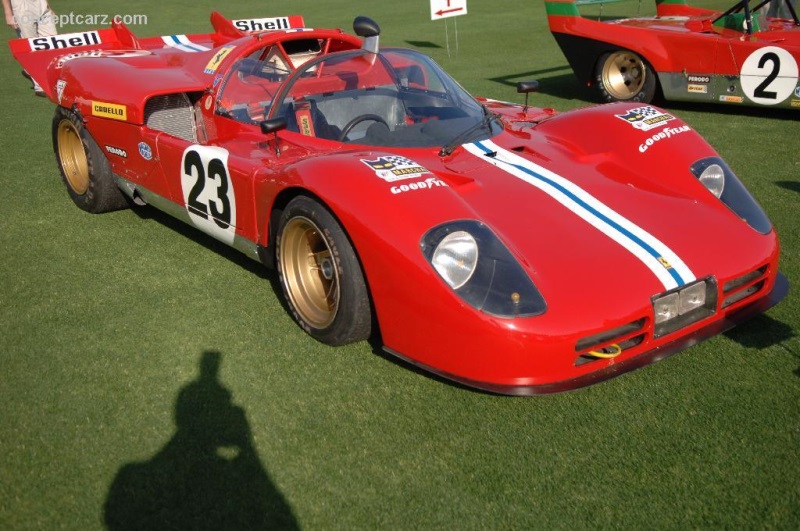The FIA changed the regulations of the Sport category to allow vehicles with 5-liter engines, up from the prior 3-liter capacity. Instead of 50 examples, only 25 examples needed to be produced to satisfy homologation rules. With the 917, Porsche had high hopes for capturing an overall victory at the grueling 24 Hour of LeMans. Porsche had seen success with its 904, 907 and 908 race cars. These cars had done very well on the race track though some were plagued with mechanical difficulties and other growing pains which may have held them from realizing their true potential. Porsche had not captured any overall wins at LeMans, just victories within their classes. 
Coupe
Chassis #: 1004
View info and historyFerrari chose to use their preexisting Formula 1 V-12 engine and created a prototype racer. Regulations for the prototype group restricted displacement to be no greater than three liters. In 1969, the 312 P was constructed and ready for racing. It made its debut at Daytona, the season opener, where it easily captured pole position. At the end of the race, it had proven its abilities by finishing first in class. The 312 P continued to be raced until Porsche introduced their 917 at LeMans. The Porsche 917 was designed and built in 10 months and was powered by the Type 912 flat 12 engine of various displacements. As with most prototype vehicles, the 917 suffered from growing pains. The aerodynamics created low drag rather than downforce and made the vehicle unstable at speeds. Though the 917 had been quick in practice, it had poor results during race day. After seeing the potential of the 917, Enzo Ferrari was inspired and began working on a GT racer. An engine was developed, named the Type 261, and followed closely with the already existing Formula 1 engine. It had a five-liter displacement size and a Lucas fuel injection system. The new engine was capable of producing 560 horsepower which was later increased to 600. It was placed mid-ship and powered the rear wheels. Since it was not air-cooled, it required a plethora of cooling pipes and a heavy radiator. With quad cams and four valves per cylinder, the longitudinally-mounted, 60-degree engine was ready to take on the Porsche 917.The chassis followed closely with the design of the 312 P, but was modified to carry the extra weight of the larger engine. The front section was an aluminum spaceframe with a rear subframe. The body was constructed of fiberglass and designed similar to its 312 P sibling. When all was said and done, it weighed less than 900 kg. The chassis were numbered from 1002 to 1050, 19 were raced during the 1970 season. 
Coupe
Chassis #: 1004
View info and historyThough the 512 was more powerful than the 917, it lacked a couple of things, when compared to the Porsche. Due to using steel, reinforced with aluminum sheet, weight was about 100 kg's more than the alloy-framed 917. The 917 had been introduced six months prior and had the benefit of being raced, tested, and its flaws identified. The Porsche had gone through the typical maturing stage and was becoming a solid contender. The 512 had a couple of months of testing but had never been raced. Its shortcomings and weaknesses were unknown. Though this was a problem, it would not be an issue if the requirements for homologation were not meet. Ferrari had completed 17 examples and displayed parts for the remaining 8 cars. This was good enough to pass and five of the 512's were entered into the Daytona 24 Hours. A 512 S driven by Mario Andretti had proven good enough to capture a pole position. At the completion of the race, Andretti had driven his 512 S to a fifth-place finish, a respectable result but Enzo had been hoping for more. A failure in the suspension had dropped Andretti from a possible second-place finish. During the final laps, he had to carefully negotiate the car around the course and continued to fall in the ranking. The other four Ferrari 512's had experienced mechanical problems and did not finish the race.The results were disappointing, but it did identify areas of needed improvement. The aerodynamics, power and handling had been good but more work could be done. The weight and fuel consumption were two of its biggest flaws. By removing the top, the weight was reduced by 25 kg's. This was not a favorable solution for the drivers, especially in bad weather. The fuel efficiency issues were addresses with an improved fuel injection system.
Coupe
Chassis #: 1004
View info and historyThe next championship race for the 512's were at Sebring. Improvements and modifications had been made to the Ferrari's, mostly the conversion to spyders for four of the five entrants. The car that had been driven by Andretti at Daytona had its original configuration. Andretti had managed to secure a pole position, and at the start of the race quickly emerged at the front of the pack. A pit stop sent him back into fourth place. At the end of the race, Andretti had captured the first victory with a Ferrari 512. Part of the success was attributed to mechanical problems with the Porsches, forcing many to retire. The season was far from over, with five championship races still remaining. During the remaining races, the 512 continued to be a strong contender, due in part to its excellent handling and its durability. Out of seventeen starts, only one retired prematurely. At Monza, the 512 had one of their best performances resulting in a second, third, and fourth-place finish. The final race of the championship season was at LeMans. This twenty-four-hour endurance race tests the drivers, teams, and the car. Its straight stretches favor vehicles with a high top speed. Porsche and Ferrari both created special longtail versions of the 512, hoping to reduce drag and increase the top speed. During practice for Porsche, the longtail versions had proven to be underdeveloped so they were reluctant to use them. The aerodynamics created by the longtails gave Ferrari an advantage but the extra 100 KG's was a handicap. During qualifying, the 512's proved to be fast and earned excellent positioning on the grid. 
Coupe
Chassis #: 1004
View info and historyThe glorious season the 512 had endured up to this point was about to degrade. The claim-to-fame for the Ferrari's had been their reliability which allowed them to finish. Just thirty minutes into the race, Vascarella was forced to retire his 512 S after major mechanical problems. The rain began to fall and two factory works cars were involved in accidents. The remaining 512 S works car managed to lead the pack until the early morning, when due to poor track conditions, it crashed, killing a marshal. When the checkered flag dropped, it was a Porsche in the lead.The season had shown that the 512 S was fast but more could be done to improve its performance. Work began on revising the car, and the result was dubbed the 512 M, meaning Modificato/Modified. 15 of the 25 vehicles were converted. Weight was reduced by nearly 40 kg's, and the engine was improved to produce 620 horsepower. Air circulation was improved with the adoption of an airbox, which forced air into the engine. The inaugural race for the 512 M was at the 1970 championship race in Austria. Driven by Ickx and Giunti, the 512 M easily outpaced the 917s. Fuel and alternator problems meant the 512 M would not see the end of the race, but it had shown the capability of the car.
Coupe
Chassis #: 1004
View info and historyFor the 1971 season, Ferrari left the 512 M to be raced by customer teams. Ferrari focused their efforts on a 3-liter prototype program, since many of the tracks favored the smaller prototype racers. In the hands of the private customers, the 512 M was no match for the factory-backed Porsche program. During the 1971 season, Porsche had won 8 of the 11 rounds of the Manufacturer World Championship. At the end of the 1971 season, the Porsche 917 and Ferrari 512 had proven their abilities and supremacy that the FIA added new regulations that made them ineligible to race in world championships.Chassis number 1020 was converted at the end of the 1970 season to a 512M and sold to NART. Chassis number 1024 was converted to a 512M and sold to Scuderia Brescia Corse. 1036 was a test car used by the racing division of Ferrari and later sold to Solar Productions where it was featured in Steve McQueen's movie, Le Mans. 1040 was sold to Chris Cord and Steve Earle of the United States and raced in the CanAm series. Due to its aggressive racing program and modifications that were made, it is probably the fastest and most advanced car of the series. It was run by Roger Penske and prepared in blue and yellow livery. Driven by Mark Donohue and David Hobbs, it was stricken with a string of bad luck and new had any good finishes. Its best was a third-place finish at the 24 Hours of Daytona race. Chassis number 1046 was used for two things, the first being to aid in the homologation requirements, the second being a 'parts car.' Chassis number 1048 was sold as a test car to Filipinetti and not raced during the 1970 season. 1050 was sold in disassembled chassis and body configuration to Corrado Manfredini who later had it converted to a 512M and raced it during the 1971 season. Several of the 512S were destroyed in accidents, including 1012, a spyder that had crashed during practice at the ADAC 1000-KM on Nurburgring. 1026 was destroyed during the LeMans film.
by Daniel Vaughan | Mar 2012
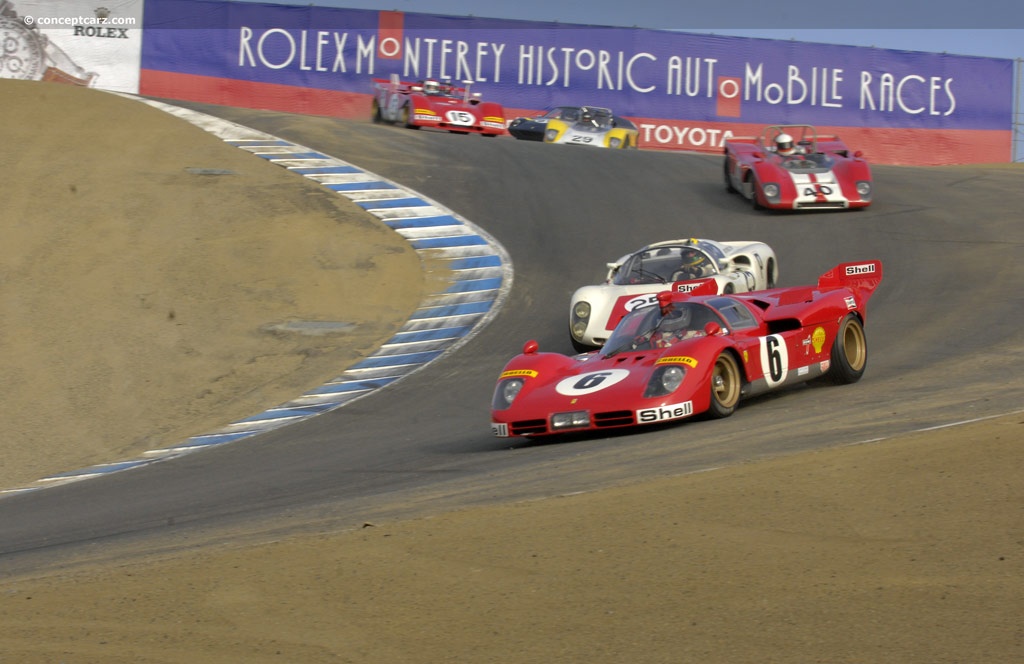
Coupe
Chassis #: 1004
View info and history
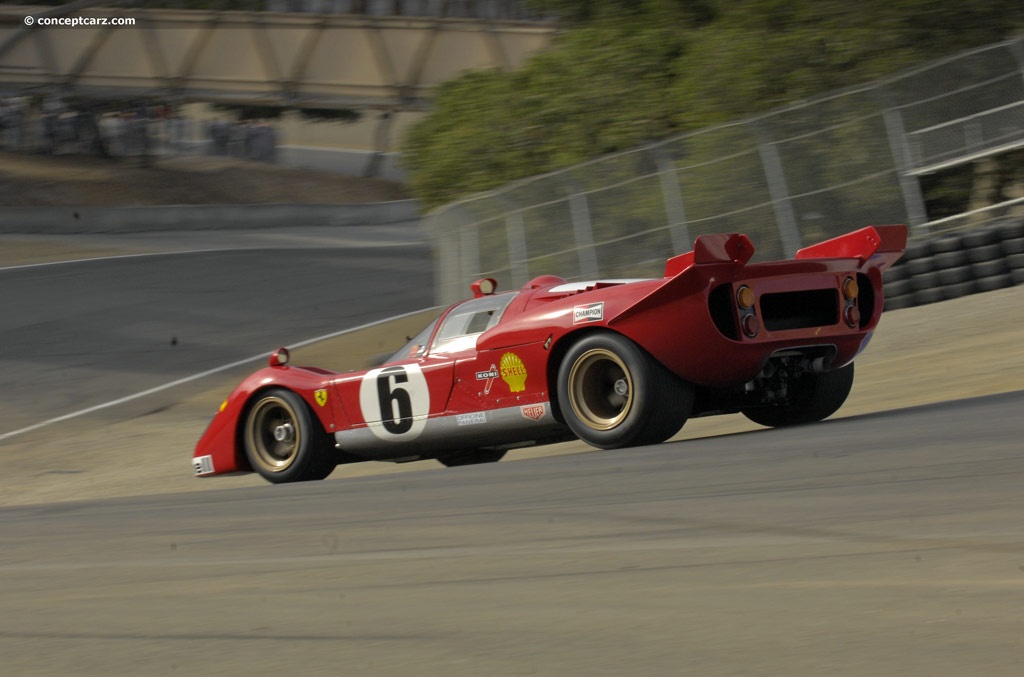
Coupe
Chassis #: 1004
View info and history
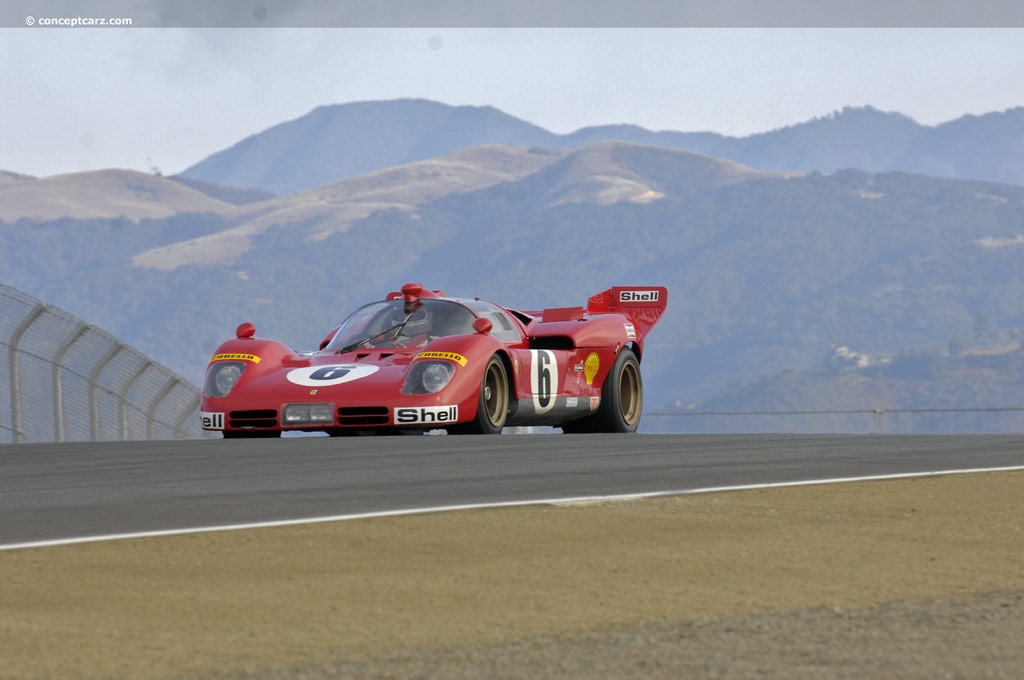
Coupe
Chassis #: 1004
View info and history
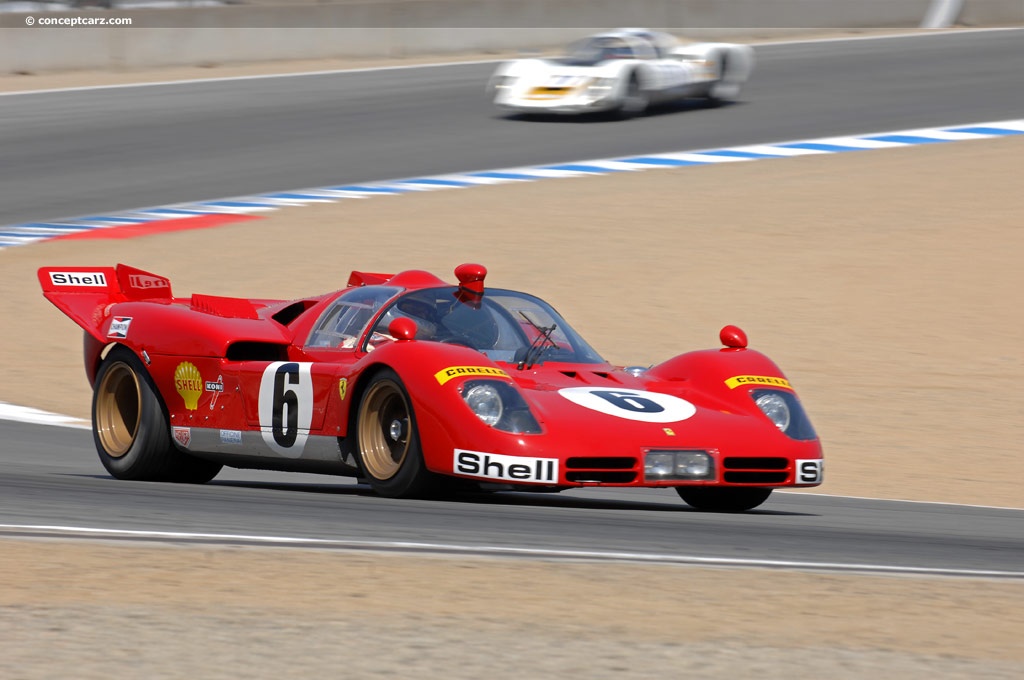
Coupe
Chassis #: 1004
View info and history

Coupe
Chassis #: 1004
View info and history
by Daniel Vaughan | Mar 2012
Related Reading : Ferrari 512 History
Raced in 1970 and 1971, the Ferrari 512 was a sports vehicle, related to the Ferrari P series of sports prototypes that was eventually withdrawn from competition after a change in regulations in 1968. A year later Ferrari decided to do what Porsche did six months earlier and build 25 5.0 L cars at one time to be homologated as sports car prototypes. The surplus vehicles were intended to be sold to....
Continue Reading >>
Continue Reading >>
1970 Ferrari 512 S Vehicle Profiles
Recent Vehicle Additions
Related Automotive News

A victory for history
The Ferrari 512 M the sports prototype faster than the F1
Maranello, 28th October – The Ferrari 512 M was the last car Maranello designed for the Sports Prototype World Championship to sport a 5-litre engine. It was a veritable powerh...

Ex-Surtees race-winner and rare Chinetti-commissioned Spider join Salon Privé's Ferrari 75th Anniversary class
Salon Privé Concours dElégance presented by Aviva introduces pair of important Maranello models - from road and track - in its Ferrari 75th Anniversary class
#1 - One of only two Ferrari 275 GTB4 S NART Spiders built with an aluminium body, and...

VIC ELFORD RECEIVES RRDC'S 2015 PHIL HILL AWARD
DAYTONA BEACH, Fla. (Jan. 22, 2015) - Vic Elford, considered one of the fastest race-car drivers of the Sixties and Seventies, was honored by the Road Racing Drivers Club with the 2015 Phil Hill Award. RRDC president Bobby Rahal made the presentation...

Techno Classica 2014: more than 30 racing cars to celebrate 120 years of Mercedes-Benz motor racing history
Cars that were the heroes of magical moments put their stamp on this high-powered, most comprehensive show presentation
With more than 30 vehicles, Mercedes-Benz Classic presents motor racing history in all its unique breadth and depth
120 years o...
RRDC VOTES IN 37 NEW MEMBERS FOR 2013
HILLIARD, Ohio (Nov. 7, 2013) - Thirty-seven race-car drivers and motorsports professionals have been voted into the Road Racing Drivers Club in 2013. The group includes 13 Regular Members from the open-wheel and sports-car racing ranks, 20 Associate...

1967 Can-Am Road America: The Beginning of the 'Bruce and Denny Show'
While Formula One will be forever considered the pinnacle of motorsport, from a period between 1966 and 1986 there existed a series that would likely be the closest to anything goes as any motor racing series could truly get. Based upon the FIA Group...

































